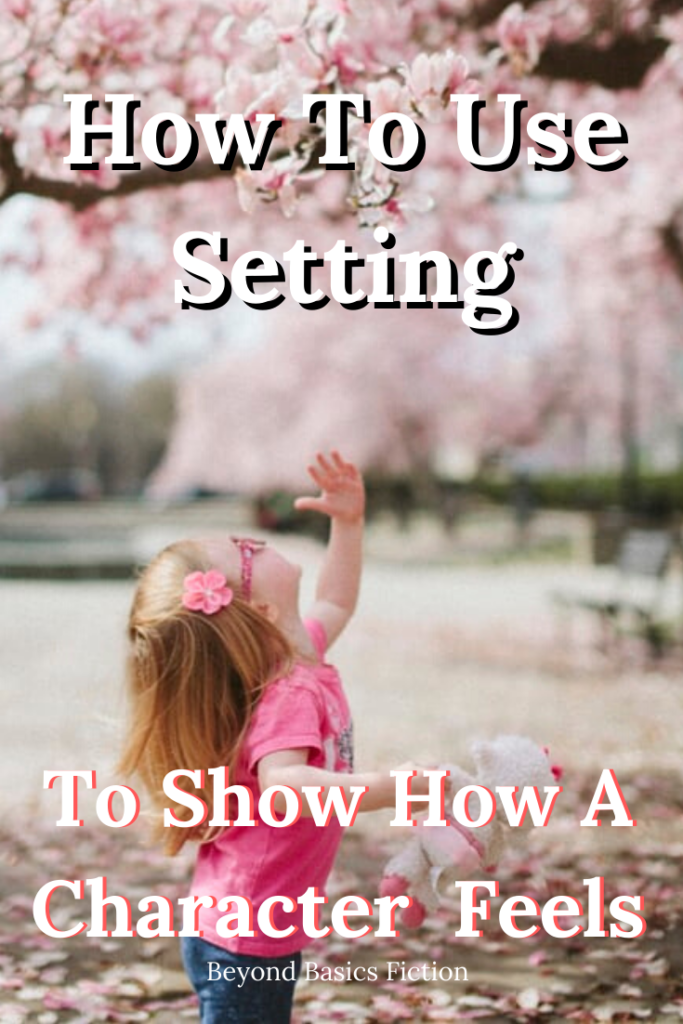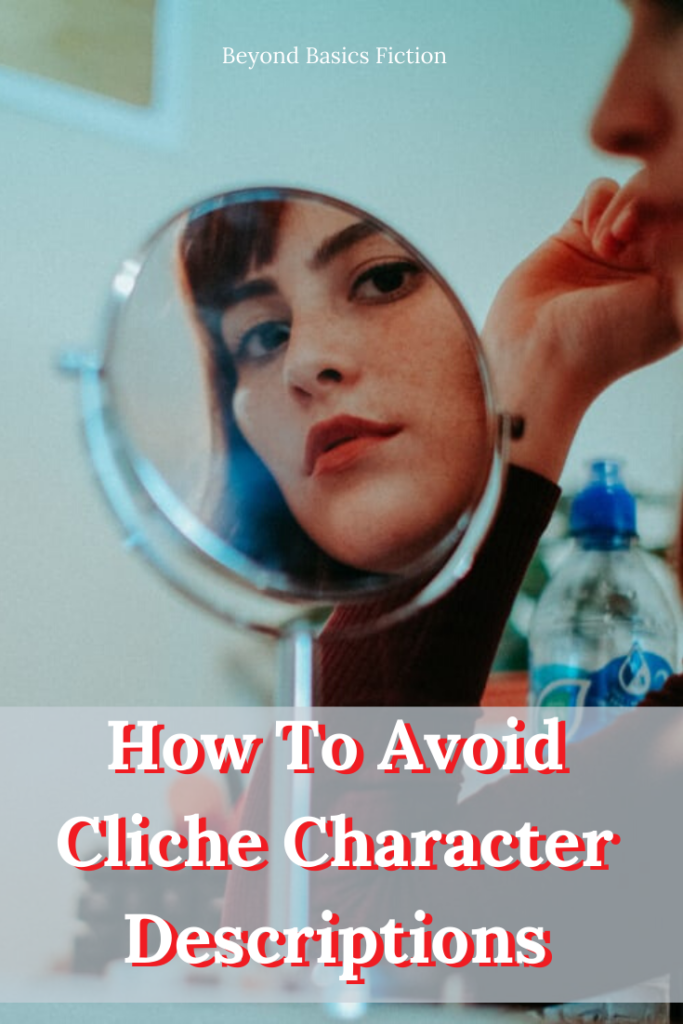
Woop! Let’s give 2019 a giant kick out the door and welcome in 2020 with a bang! Beginning January 1st, I am launching 30 Days Of Deep POV on my Facebook page, where I’ll be creating a video a day based on my 30 most popular blog posts (including guest posts) on deep point of view (t. Don’t miss out! Join the fun on Facebook!
I am continuing the Deep POV FAQ series and today’s question is: how do I add more pertinent details without boring my readers?
I get asked this A LOT concerning writing in deep point of view. I’ve blogged about writing description here and here. Here and here. But it is hard to know what you should expand on or cut way back, so let’s get super practical right now. Because to you – ALL the details are important. So how do you know what to keep and what to get rid of?
How Much Does The Reader Need To Know NOW?
Some details are important for the reader to know – to understand the story, but resist the temptation to deliver all of it at once. Ask – how much does the reader need to know RIGHT NOW to understand what’s going on? My personal rule for backstory is to answer one question and leave the reader with two more. Drip. Drip. Drip. Same rule applies here with description. Scene by scene, drip-drip-drip, ask yourself what information the reader absolutely needs to know to understand what’s going on right now. Does the reader need to know the history of THAT coffee table RIGHT NOW, or does the reader just need to know that there’s an interesting coffee table that catches her eye because right now something is more important to the character?

It’s better to deliver information to the reader through dialogue than a narrative passage, it’s more fun to read and is less likely to slow the pace. Think of the Immortal Instruments series by Cassandra Clare. Clary knows nothing about the shadow world, about shadowhunters, so she’s always asking questions and needing things explained to her. Her questions deliver the information the reader needs to know to understand the story, but Clary couldn’t possibly know all the questions to ask in Chapter One. She has to keep moving forward and ask questions as they come up, on a need-to-know basis. That’s the best way to think of it. Keep the story moving ahead always.
For Those Who Love Flowery, Flowing, Descriptive Passages…
If this is you, probably you find that you have to edit out big sections of narrative (and it feels a bit like you’re gutting the heart of the story). First, you can’t fix something that isn’t written, so a pat on the back for getting the words down. That’s the first big hurdle.
With deep point of view, every bit of information given to the reader is filtered through the point of view character – not you, the writer. The goal of deep point of view, remember, is for the writer to disappear and for the reader to feel like they’re IN the story with the character. Ask yourself, at the beginning of any scene, what’s your POV character’s motivation in this scene? Sounds like something an actor would ask, but it works here too. Because, whatever your POV character is zoned in on determines what they notice, ignore, explain away, take in but don’t linger over, etc.
I often use the example of a teenage boy home from school who’s hungry. (yes, this might be an example ripped straight from my own life). The boy won’t notice the new paint on the wall, that the furniture has been rearranged, that mom’s got a new haircut – nothing. (all true stories) What he will notice is that the dog is wet when it jumps on him. He’ll notice if there’s a smell in the house that hints at baking taking place. He will have catalogued everything in the fridge and know if something’s been added or removed (say, leftover pizza).
This filtering of details is super important in deep point of view. A character who’s eager to impress or please, might trip over themselves offering compliments or searching for something they think the other person is proud of. A guy who’s walked into the local coffee shop and sees his girl sitting with some other guy will notice different things than the friends who are standing right next to him. It’s not that those other things don’t exist, but the details are filtered through what’s important to that character right now.
Additionally, remember that the reader does 80% of the work of description. If I tell you that a female walks into a male co-worker’s office, shuts the blinds, slips out of her heels and pops open the top three buttons on her blouse – does it matter what colour the carpet is, or if the desk between them is mahogany or oak? Ask what would THAT character focus on, IN THAT MOMENT? That’s what the reader gets to know about. Cut everything else.
The Details Given Specificity Are Considered Important By Readers
One of the pitfalls of deep point of view is falling into what’s called writing on the nose. This is when every movement is described in a blow-by-blow account that doesn’t serve the story. This needless description frustrates readers because the story’s pace moves at a glacial speed. Remember, the more time you spend describing anything, the more importance the reader will assume it to have. Whether it’s an object on a table, the table itself, or even the walk to answer the door, if it’s important to the character in that moment it had better help move the story forward. Be ruthless about this.

Some writers love these sweeping all-encompassing descriptions of setting. The moon, the stars, the wind through the trees, the crickets, the blah blah blah. Keep in mind that these sections of description slow the pace of your story, so be strategic with them. If it’s true to the character to notice the colours of the setting sun and reminisce about some childhood memory, that’s fine, but be strategic with the pacing. In the middle of a chase scene is not the place for that kind of narrative. Also, drip-drip-drip. It’s hard to justify giving more than a couple lines to this kind of description. If it’s a paragraph, two paragraphs, half a page or more, be very objective about whether the reader needs all that information in that spot.
What is the norm for the genre you’re writing in? Some genres make more room for these types of descriptive passages than others.
Use Description To Show More About Your Characters
Yes, it’s good to be specific when possible because it helps the reader picture the scene better. However, one pitfall to watch out for is giving the character knowledge they don’t actually possess. I can open the hood of my vehicle and find where to add wiper fluid, where to check the oil and add oil… and that’s about it. I’m sure those parts have proper names but I don’t know them. You wouldn’t have to tell a reader your character is a mechanic if they can open the hood and actually name all the parts and know their function, or recognize a problem in a particular part by a sound.
I can walk into a garden (near where I live) and name many of the plants growing in any season. My husband notices flower colours. I couldn’t tell you one designer hand bag from another, but I know what expensive looks like.
Use this filter to give the reader information about your character. This is part of show don’t tell. If I’m reading about a character who can walk into a new-to-them garden and name many of the plants, I assume they know a lot about gardening. The writer wouldn’t have to tell me that. But if your character knows everything about everything, I can’t discern anything about their character.
Additionally, does this garden-loving character get upset that the Irises are planted too deep (and now won’t flower), or do they take a moment to recall the Latin name for the plant? These small details give insight into the character, but are just a drip, drip, drip of information. The reader may not catch every single hint, but they’ll catch enough to get to know your character. It’s just a phrase, not even a whole sentence, of this kind of description filtered through what’s important to the character, that really brings a character and a story to life for readers.
Ask Your Beta Readers
In the end, knowing what to keep and what to cut comes down to how well you’re communicating ideas that you feel are important/vital to the story you want to tell and the characters you’ve created. Take the time to interview your beta readers. Pick out a particular scene, ask them how it made them feel? What did they love? Where were they tempted to skim? Know what effect you were going for in that scene and blatantly ask if you pulled that off. Ask more than one beta reader.
This is the kind of feedback that will help you learn where to be clearer, where you can lean closer to what might feel like melodrama to you, or where to cut back because the point is being muddied or the passage skimmed because there’s too many details. Ask people who love your genre, but will be honest with you. Beta readers who are afraid to hurt your feelings are all that helpful, ultimately — not if you’re looking to improve your writing.
Are you a writer who writes very sparse on a first draft and has to edit in description, or are you a writer who loves to add description and has to later go back and edit much of it out? How do YOU decide what to keep?
Been told you should learn Deep Point Of View? Had an editor or critique partner tell you to “go deeper” with the emotions in your fiction? Looking for a community of writers seeking to create emotional connections with readers? Check out the Free Resource Hub and then join the Going Deeper With Emotions In Fiction Facebook group.